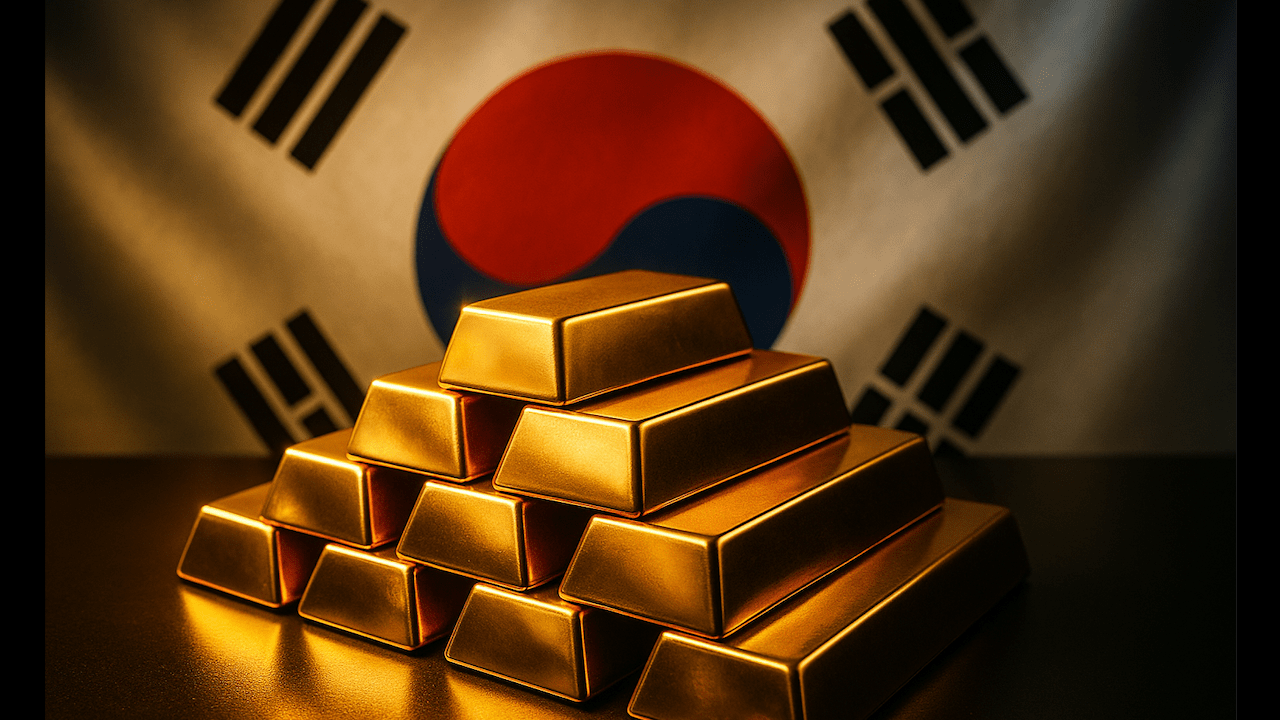(Mike Maharrey, Money Metals News Service) South Korea is considering jumping on the gold bandwagon and adding gold to its reserves.
During a speech at an event hosted by the London Bullion Market Association and London Platinum and Palladium Market in Kyoto, Japan, Bank of Korea official Heung-Soon Jung said, “The Bank of Korea plans to consider additional gold purchases…”
The last time the Bank of Korea expanded its gold reserves was in 2013. The country currently holds around 104 tonnes of gold.
Jung said the central bank will “monitor markets” to determine the timing and size of its gold purchases. He indicated that decisions will be based on “the evolution of its international reserves,” along with the price trajectories of gold and the Korean won.
De-dollarization has been a factor in the recent surge in global gold reserves. Jung specifically categorized gold as a reserve alternative to the greenback.
“Given gold’s role as an inflation hedge and its potential as an alternative investment to the U.S. dollar, it’s evident that gold should be considered as one of the viable assets from a medium- to long-term perspective.”
During the same meeting, Madagascar’s central bank governor, Aivo Andrianarivelo, indicated he is considering increasing the country’s gold reserves from 1 tonne to 4 tonnes.
South Korea and Madagascar could join the growing number of other central banks increasing their gold holdings. In the first half of 2025, central banks globally added 415 tonnes of gold to their reserves based on official numbers compiled by the World Gold Council. Some countries, including China, have added even more gold through back channels.
According to data parsed by Money Metals researcher Jan Nieuwenhuijs, the Chinese central bank is currently sitting on more than 5,000 tonnes of monetary gold located in Beijing – more than TWICE what has been publicly admitted.
On net, central banks officially increased their gold holdings by 1,044.6 tonnes in 2024. It was the 15th consecutive year of expanding gold reserves.
Last year was the third-largest expansion of central bank gold reserves on record, coming in just 6.2 tonnes lower than in 2023 and 91 tonnes lower than the all-time high set in 2022 (1,136 tonnes). 2022 was the highest level of net purchases on record, dating back to 1950, including since the suspension of dollar convertibility into gold in 1971.
To put that into context, central bank gold reserves increased by an average of just 473 tonnes annually between 2010 and 2021.
World Gold Council analysts expect the trend to continue, with buying “close to the range seen over the past three years on continued elevated trade-related risks and uncertainty premia in U.S. assets.”
The WGC also noted that “diversification” with “a reduction of U.S. assets” is one of the factors driving central bank gold buying. In other words, de-dollarization.
“We don’t see an end to this narrative unless there is a material shift in geopolitical tensions. The IMF has downgraded growth prospects in the U.S. more than in other major economies, citing policy uncertainty. This suggests that other countries may have leverage in negotiations, although these typically last months and years, not weeks. Hence, we don’t expect any near-term resolutions.”
Mike Maharrey is a journalist and market analyst for Money Metals with over a decade of experience in precious metals. He holds a BS in accounting from the University of Kentucky and a BA in journalism from the University of South Florida.

